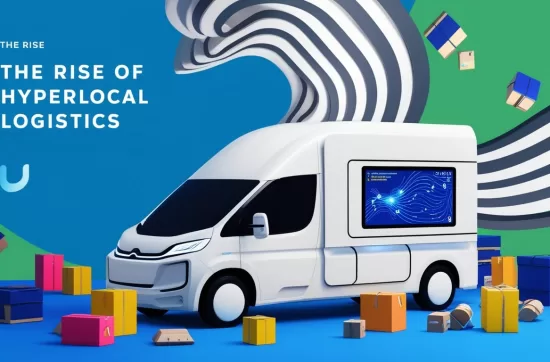Discover the benefits of Hyperlocal Logistics for businesses, from faster delivery times to enhanced customer satisfaction. Explore how localized delivery networks are shaping the future of retail logistics. Introduction: In recent years, Hyperlocal Logistics has become a game-changer in the supply chain world, transforming the way businesses deliver goods and services to customers. Unlike traditional logistics models that focus on centralized distribution centers, Hyperlocal Logistics targets smaller, localized markets, allowing businesses to meet the growing demand for faster, more efficient delivery. This shift towards localized delivery networks provides a variety of benefits for both businesses and consumers. By implementing Hyperlocal Logistics, companies can offer same-day delivery options, enhance customer satisfaction, and streamline their operations. This blog delves into the key benefits of Hyperlocal Logistics and why it’s becoming a must-have for modern businesses. What is Hyperlocal Logistics? Hyperlocal Logistics refers to a distribution model where goods and services are delivered within a limited geographic area, typically from a local hub or store to the customer’s location. This approach relies on localized delivery networks, where businesses can deliver products faster and with greater flexibility. This model has become particularly popular with e-commerce, grocery, and food delivery services, which require swift and efficient delivery to stay competitive. Businesses leverage Hyperlocal delivery solutions to ensure that customers receive their orders within hours, or sometimes minutes, of placing them. Key Benefits of Hyperlocal Logistic 1. Faster Delivery Times One of the most significant advantages of Hyperlocal Logistics is its ability to offer same-day or even one-hour delivery options. Since the products are stored and delivered from local hubs or stores, businesses can dramatically reduce the distance traveled. This allows companies to meet the growing demand for quick deliveries, especially in metropolitan areas where speed is essential. For retailers, using Hyperlocal delivery solutions enhances customer satisfaction, making it easier for them to compete with large e-commerce giants like Amazon, which offer same-day or next-day delivery. 2. Cost-Efficiency Unlike traditional logistics models that require centralized warehouses and longer delivery routes, Hyperlocal Logistics operates on a much smaller scale. Businesses can cut costs by reducing the need for large storage facilities and minimizing fuel expenses associated with long-distance transportation. In addition, by utilizing Hyperlocal supply chain methods, businesses can optimize inventory and reduce wastage. Companies no longer need to stockpile goods in massive warehouses but can instead use localized hubs that distribute products based on real-time demand. This reduces holding costs, improves cash flow, and allows for more agile inventory management. 3. Environmental Sustainability Another key benefit of Hyperlocal Logistics is its potential to reduce carbon emissions. With shorter delivery routes and optimized distribution networks, businesses can minimize their environmental footprint. This is a significant advantage for companies that are committed to sustainability goals. By incorporating Hyperlocal delivery solutions, businesses contribute to reducing traffic congestion in urban areas and lowering fuel consumption. This approach not only aligns with sustainability initiatives but also helps businesses enhance their brand reputation among eco-conscious consumers. 4. Enhanced Customer Experience In today’s competitive market, customers expect speed…


